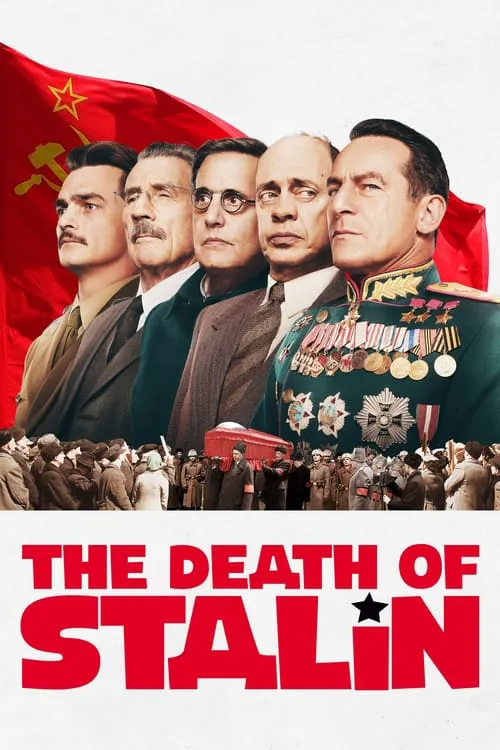The Death of Stalin

Plot
The Death of Stalin is a satirical black comedy film directed by Armando Iannucci, which takes place in the final days of Joseph Stalin's reign in the Soviet Union. The movie follows the chaotic events that unfold after Stalin's demise, as his close-knit inner circle and loyal officials engage in a frenzied power struggle to succeed the great leader. The film begins with Stalin's sudden death, which sets off a chain reaction of panic and paranoia throughout the Kremlin. Stalin's corpse lies on the operating table, with doctors struggling to revive him, while his inner circle gathers around, trying to understand the implications of his death. This inner circle consists of Nikita Khrushchev, a trusted lieutenant and potential successor; Lavrentiy Beria, head of the secret police and a ruthless pragmatist; Georgy Malenkov, a cautious and bureaucratic politician; and Nikita Kaganovich, a hardline Stalin loyalist. As the inner circle discusses the future of the Soviet Union, it becomes clear that everyone wants a piece of the action. Khrushchev, a rising star in the Communist Party, sees an opportunity to cement his position and rise to power, while Beria, ever the opportunist, tries to manipulate the situation to his advantage. Malenkov, a master of bureaucratic jargon, tries to present himself as the calm and stable leader, but he struggles to gain traction in the chaotic environment. Beria, a ruthless and cunning politician, takes the lead in the power struggle. He tries to assert control over the government and suppress dissent, while simultaneously working to eliminate any potential rivals. However, Beria underestimates the cunning of Khrushchev, who secretly plots against him, using his connections with other party leaders to undermine Beria's authority. Meanwhile, Stalin's corpse remains on the operating table, a macabre symbol of the power struggle unfolding around it. As the body remains untouched and unmourned, it becomes a subject of fascination for the inner circle, with Beria ordering the corpse to be embalmed and preserved, while Khrushchev quietly orders a discreet cremation, eager to eliminate any physical reminder of Stalin's rule. Throughout the movie, the power struggle between Khrushchev and Beria reaches a fever pitch. The two men engage in a series of brutal and absurd battles, with both sides using every tactic imaginable to gain the upper hand. They manipulate propaganda, use their agents to silence rival leaders, and even orchestrate a fake investigation to deflect suspicion. In the midst of this chaos, other characters add their own brand of humor and absurdity to the power struggle. One of the most notable is Svetlana, Stalin's daughter, who finds herself at the center of a complex web of intrigue and deception. Throughout the film, she navigates the treacherous world of the Soviet elite, using her charm and guile to play both sides of the power struggle. As the power struggle rages on, the situation becomes increasingly absurd and illogical. Characters engage in ridiculous behaviors, from pretending to be mourning Stalin while secretly plotting against each other to engaging in a bizarre game of power politics. In the end, Khrushchev emerges victorious, managing to outmaneuver Beria and consolidate his position as the new leader of the Soviet Union. As the curtain falls on The Death of Stalin, the audience is left with a lasting impression of the dark and absurd side of Soviet history, as well as the ridiculous lengths to which power-hungry politicians will go to achieve their goals.
Reviews
Recommendations




